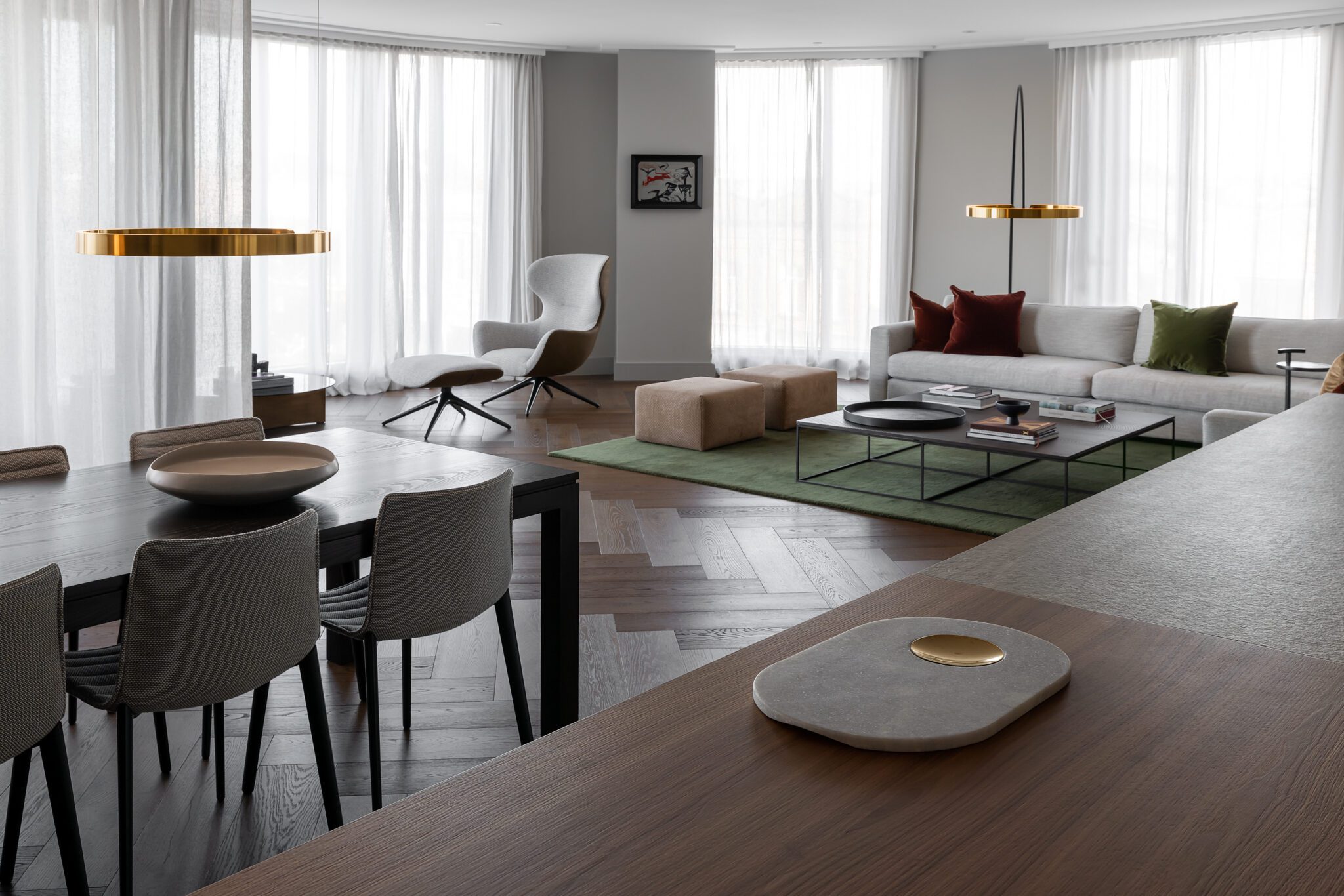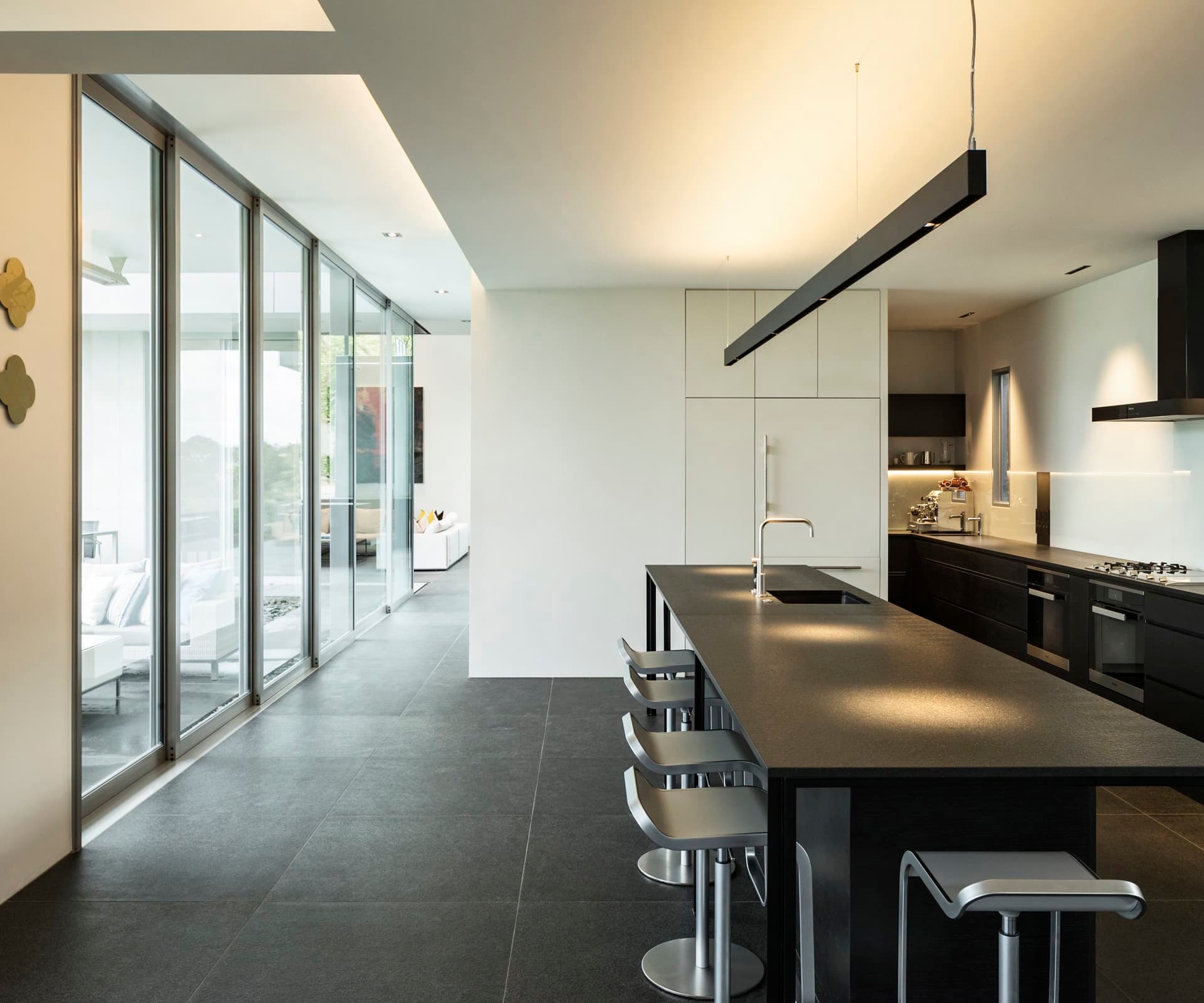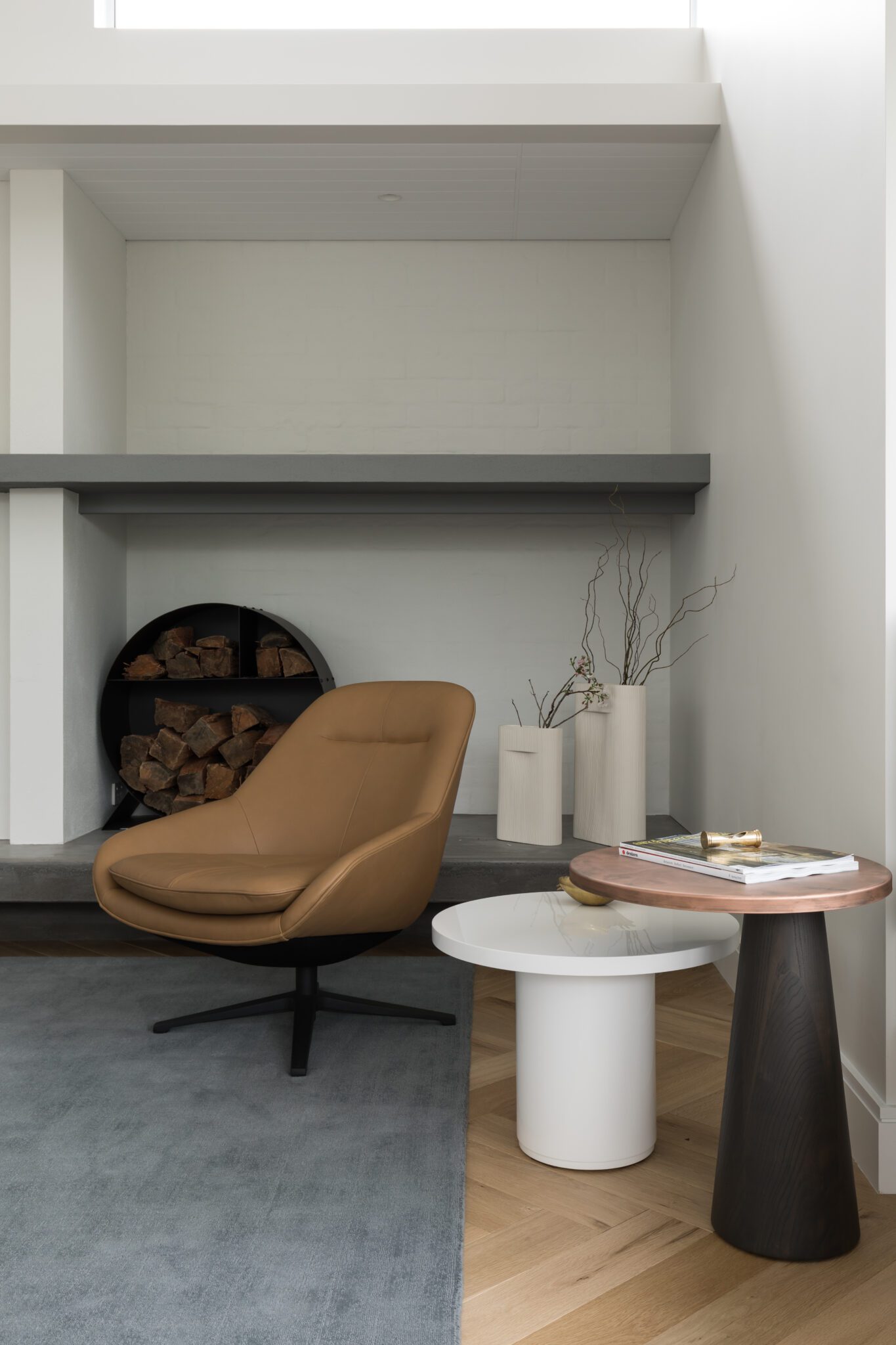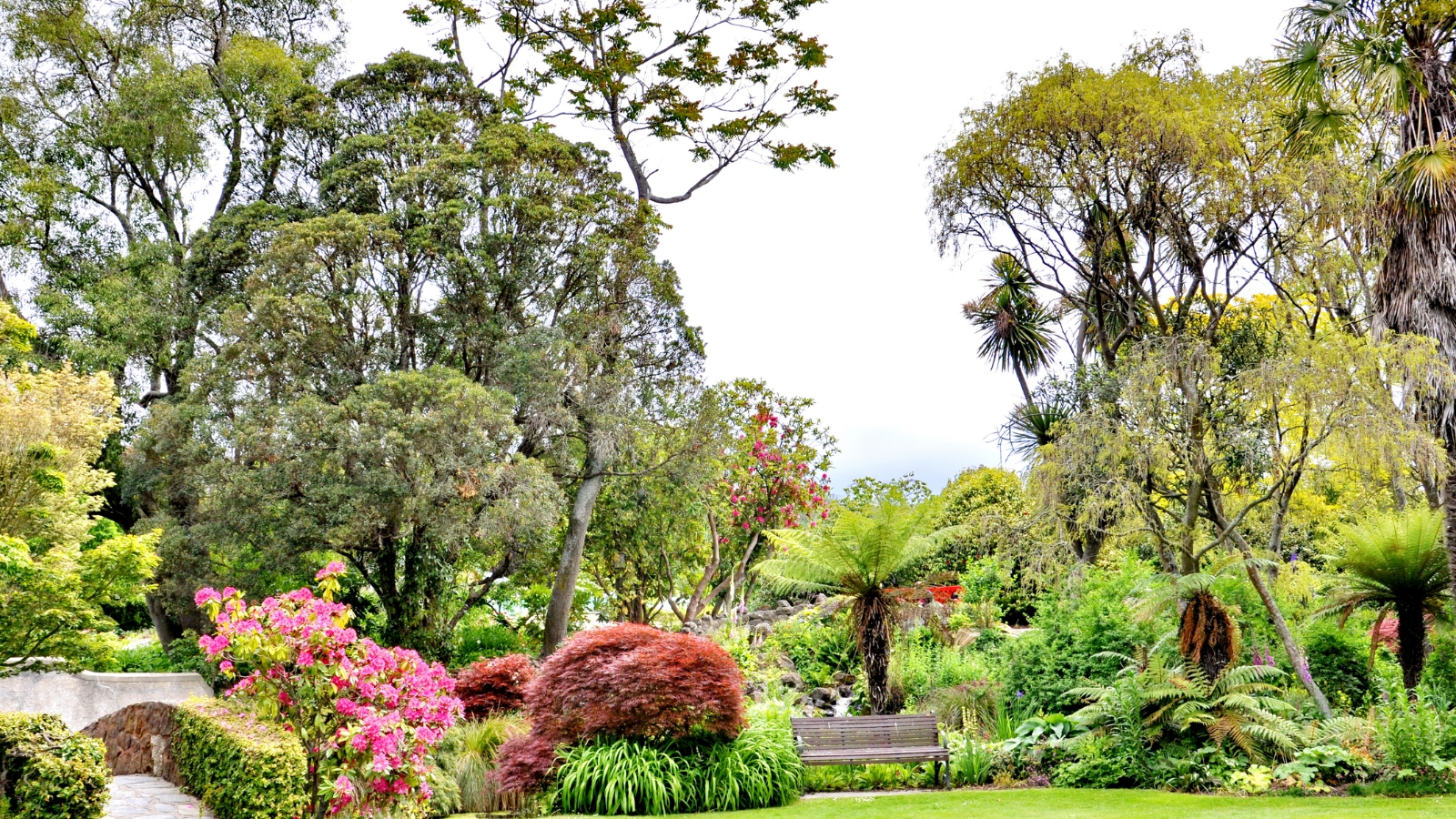Feature article
The Art of Decluttering: Transforming Your Home into a Minimalist Haven
Feeling overwhelmed with your home, learn the art of decluttering and transform your space.
21 March 2025

In today's fast-paced world many of us are seeking ways to simplify our lives. One of the more effective ways to achieve this is by decluttering our home and embracing a minimalist style. A minimalist home design not only helps in creating a calm, serene environment but also promotes mental clarity and wellbeing.
Minimalism isn’t just a design style — it's a lifestyle choice that encourages simplicity, functionality and intentionality. A minimalist home design focuses on eliminating unnecessary items while celebrating the beauty of space, light and organisation. Decluttering is the first step in achieving this and it is essential to approach it with a clear mindset and strategic planning — much like this Auckland apartment by KKID.
Benefits of embracing minimalist living
- Reduced stress: a clutter-free home can significantly reduce stress levels. By removing distractions and organising your living spaces, you create an environment that promotes calmness and focus.
- Increased productivity: a decluttered home helps clear your mind, making it easier to stay organised and productive in both your personal and professional life, particularly important if you spend any time working from home.
- Improved space utilisation: minimalist living promotes making the most of your available space by removing excess belongings and using multifunctional furniture.
The following decluttering tips and home organisation strategies are tailored to help you embrace minimalist living and to guide you in transforming your home into a peaceful sanctuary.
Practical decluttering advice for every room
Whether you’re starting from scratch or simply looking to refresh your home, these decluttering tips will help you get started on the right foot.
1. Focus on one area at a time
Tackling the entire house can feel overwhelming, so break your decluttering journey into smaller, more manageable tasks. Start with a single room, closet or even a drawer. As you make progress, the task will feel less daunting.
2. Remember the 'one in, one out' rule
This simple yet effective strategy, which is even more important in this age of online shopping, helps prevent unnecessary accumulation. The rule is, every time you bring a new item into your home, make sure to part with one old item. This keeps clutter from building up again and helps maintain a minimalist aesthetic. Yes, it takes self-control but the results are worth it.
3. Sort items into categories
When decluttering, it’s helpful to categorise your items. One of the biggest roadblocks to us decluttering is the thought that we’re throwing away good, useful items. If you create piles for things to keep, donate, sell and yes, throw away you will not only feel better about decluttering but someone else can benefit from your pre-loved items. Be honest with yourself though, if an item doesn’t add value to your life, it’s time to let it go.
4. Adopt a ‘less is more’ mindset
Incorporate the minimalist philosophy into your decision-making process. Keep only the items that truly serve a purpose or bring you joy. Avoid holding onto things just because they’re sentimental or because you feel guilty about throwing them away.
5. Digitise where possible
Many of us accumulate piles of paper, from bills to old photos. Consider digitising important documents and photographs to reduce physical clutter while still preserving memories and essential information.
The owners of this apartment were downsizing from a family home and tasked KKID with creating a scheme that maximised space by utilising furniture, lighting and art.
Home organisation strategies for a minimalist haven
Effective home organisation is crucial to maintaining the minimalist look. Here are some home organisation strategies to keep your living space tidy and functional.
1. Maximise storage with smart furniture
Choose furniture that serves multiple purposes, such as storage ottomans, beds with drawers, or wall-mounted shelves. This allows you to store items out of sight while minimising visual clutter.
2. Use baskets and bins for efficient storage
Baskets, bins and other containers are invaluable in organising smaller items, especially in the kitchen. They help contain clutter without compromising on style. Choose minimalist designs that complement your home décor and that keep things neatly organised.
3. Keep surfaces clear
One of the hallmark traits of a minimalist home design is uncluttered surfaces. Clear counters, tables and shelves create a sense of openness and help your space feel more spacious and serene — as witnessed by the revamped kitchen in this home by architect Daniel Marshall.
4. Create zones for specific purposes
Assign designated spaces for various activities, such as work, relaxation or exercise. This will help ensure that everything has a place and that clutter doesn’t build up in areas meant for relaxation or focus.
5. Adopt a routine for tidying up
In a minimalist home, keeping clutter at bay is an ongoing process. Create a simple daily or weekly cleaning routine to ensure your space stays organised and tidy. Even spending just 15 minutes a day can make a big difference in maintaining a minimalist environment.
Originally u-shaped, the kitchen is now a darkly minimalist, galley style with a scullery to contain all the clutter.
Minimalist living in NZ — bringing minimalism to your lifestyle
Minimalist living has gained significant popularity in recent years as more and more Kiwis embrace the idea of simplicity and intentionality in their homes. The key to minimalist living is reducing distractions and focusing on what truly matters — your wellbeing, relationships and experiences.
Here are a few tips for incorporating minimalist living into your lifestyle:
1. Mindful consumption
In a world of consumerism, it’s easy to accumulate unnecessary items. Adopt a mindset of mindful consumption by only buying items that serve a specific purpose or add true value to your life. Prioritise quality over quantity.
2. Focus on quality over quantity in design
When it comes to minimalist home design, choose high-quality pieces that will stand the test of time. A few well-chosen items can have a much more significant impact than an abundance of inexpensive, mass-produced pieces — as seen in this curated interior by KKID.
Home to a family of three, this renovated villa captures their desire for an interior that was both concise and realistic.
3. Simplify your routine
Minimalist living isn’t just about the physical space — it’s also about simplifying your daily routines. Streamline your schedule, declutter your to-do lists and focus on what brings you joy and fulfilment.
Transforming your home into a minimalist haven doesn’t happen overnight, but with consistent effort, it can be a rewarding and life-changing process. So, take the first step today — start decluttering and watch your home evolve into a minimalist sanctuary that supports a simpler, more intentional life.
Author
Search
Other articles you might like




.png)




